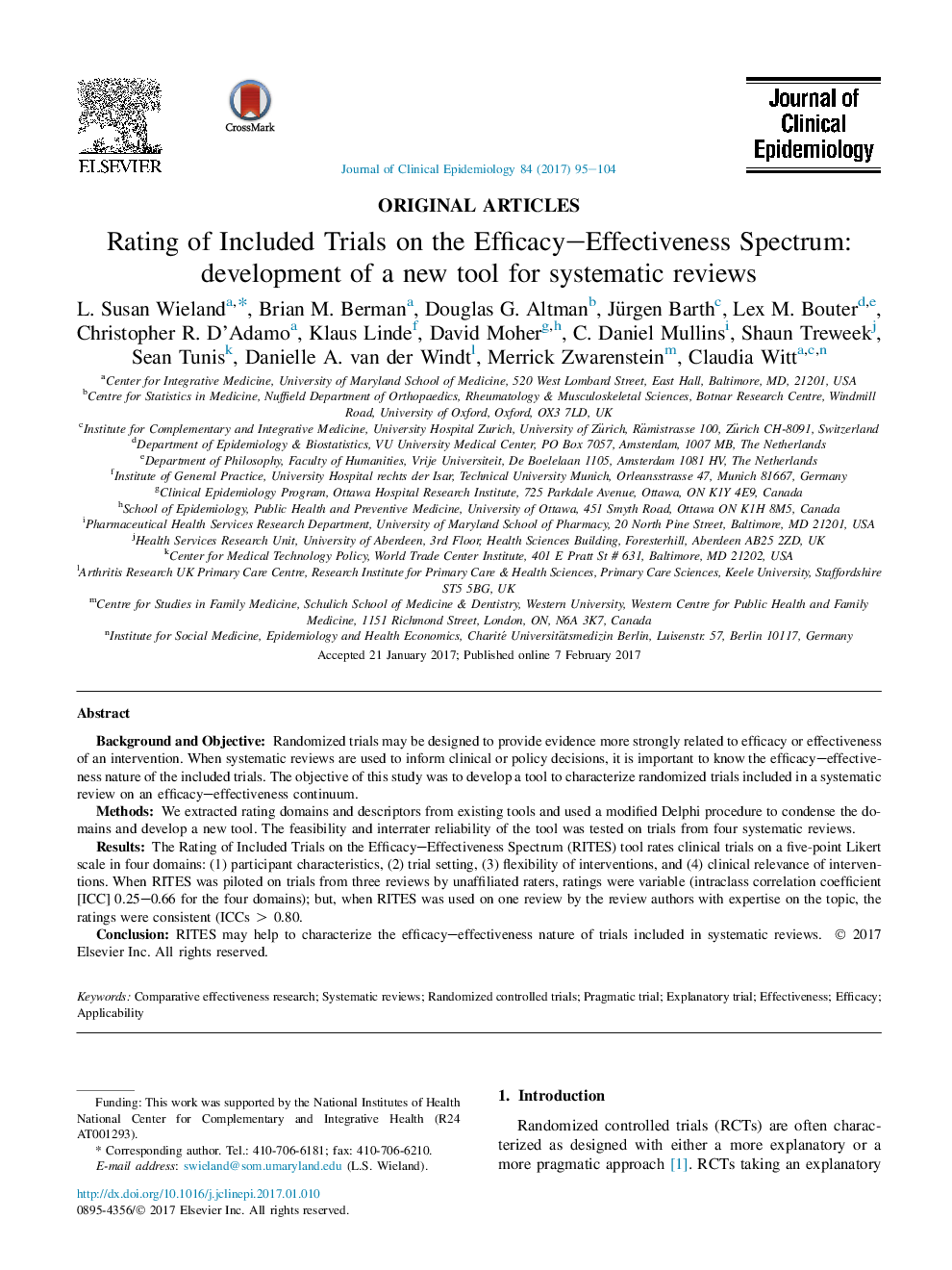| Article ID | Journal | Published Year | Pages | File Type |
|---|---|---|---|---|
| 5121730 | Journal of Clinical Epidemiology | 2017 | 10 Pages |
Background and ObjectiveRandomized trials may be designed to provide evidence more strongly related to efficacy or effectiveness of an intervention. When systematic reviews are used to inform clinical or policy decisions, it is important to know the efficacy-effectiveness nature of the included trials. The objective of this study was to develop a tool to characterize randomized trials included in a systematic review on an efficacy-effectiveness continuum.MethodsWe extracted rating domains and descriptors from existing tools and used a modified Delphi procedure to condense the domains and develop a new tool. The feasibility and interrater reliability of the tool was tested on trials from four systematic reviews.ResultsThe Rating of Included Trials on the Efficacy-Effectiveness Spectrum (RITES) tool rates clinical trials on a five-point Likert scale in four domains: (1) participant characteristics, (2) trial setting, (3) flexibility of interventions, and (4) clinical relevance of interventions. When RITES was piloted on trials from three reviews by unaffiliated raters, ratings were variable (intraclass correlation coefficient [ICC] 0.25-0.66 for the four domains); but, when RITES was used on one review by the review authors with expertise on the topic, the ratings were consistent (ICCs > 0.80.ConclusionRITES may help to characterize the efficacy-effectiveness nature of trials included in systematic reviews.
